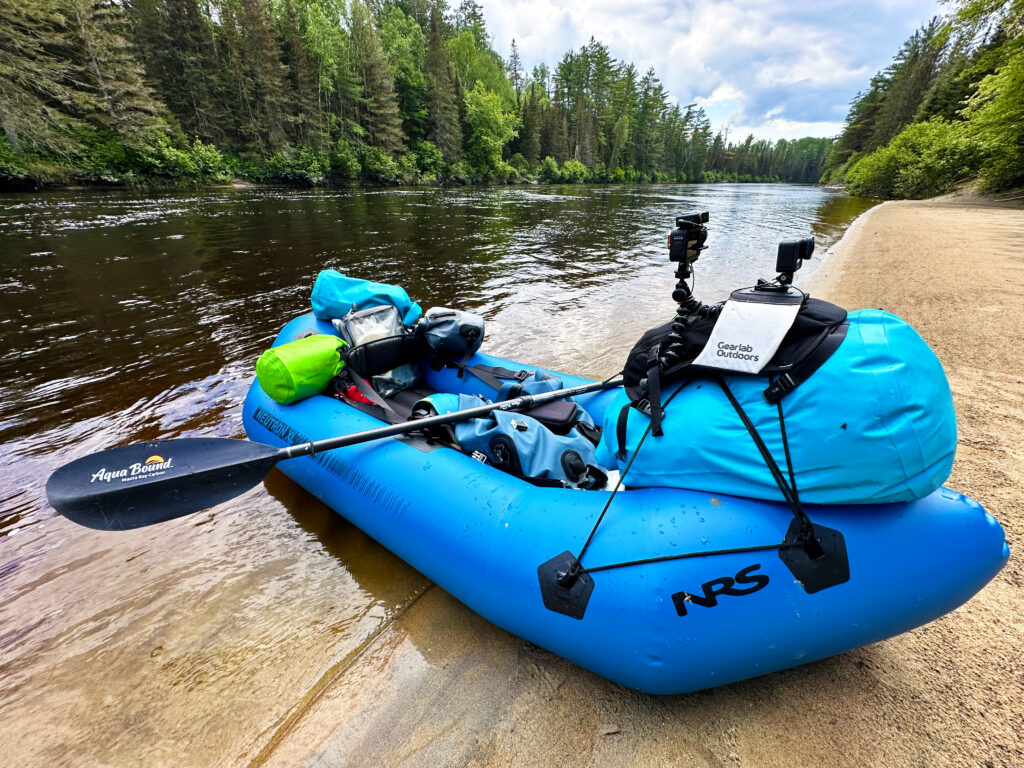When it comes to exploring waterways, the type of paddlecraft you choose can significantly impact your experience. Whether you're a seasoned paddler or just starting, selecting the right boat ensures you maximize your time on the water, have the most fun, tap into your full potential, and, most importantly, stay safe. In this article, we'll dive deep into the comparison of five popular paddlecraft: Kayaks,canoes, stand-up paddleboards (SUPs), pack boats and packrafts.
Packrafts: Taking Your Backcountry Adventures Further Than Ever
What Are Packrafts?
Packrafts are a hybrid of canoes, kayaks, and rafts. Originally designed to provide hikers and backpackers an ultra lightweight and portable paddlecraft. Packrafts allow hikers to take advantage of waterways on their journeys. Packrafts have surged in popularity with the introduction of more specialized packraft designs, which have opened the door to a wide variety of backcountry adventures.

Advantages:
- Lightweight & Portable: Modern packrafts range from around 5 lbs to 20 lbs, depending on their construction. They can be packed down into bags comparable in size to sleeping bags, making them easy to transport.
- High Stability: Packrafts are inherently stable, which reduces the risk of flipping and makes them suitable for rough water scenarios.
- High Weight Capacity: Packrafts have a high weight capacity. Some packrafts also let users access the inside of the tubes for storage space. This makes packrafts a good choice for multi-day backcountry adventures.
Disadvantages:
- Limited Durability: Packrafts sacrifice some durability in order to be lightweight and highly portable. In general, the lighter the packraft, the less durable it will be. That being said, packrafts are surprisingly durable, which is why there are a number of models that are designed specifically for whitewater.
- Performance on Flat Water: Packrafts are short and wide compared to other paddlecraft, and this makes them slower. Packrafts also lack features that help them travel in a straight line (track), like skegs or rudders. This further reduces their speed on the water, although it should be noted that a few flatwater specific models of packrafts have fins to help them track more effectively.
Kayaks: The Versatile Workhorses



Advantages:
- Versatility: There's a kayak for virtually every paddling need—from flatwater paddling to whitewater kayaking, ocean paddling, fishing, and fitness.
- Stability: Recreational kayaks are designed to be very stable, which boost the confidence and comfort for paddlers who are nervous about capsizing.
- Ease of use: Kayaking is a very intuitive activity, which requires very little instruction in its simplest form.
- Control: Using a double-bladed paddle allows for better control, especially in windy environments. The low profile of a kayak also helps to minimize the effect of wind, making them more manageable in breezy conditions.
Disadvantages:
- Weight: Kayaks can be heavy, which poses challenges during transportation. Lighter models are available, but these options cost a premium.
- Portaging Challenges: Kayaks are one of the most difficult paddlecrafts to carry. They are particularly challenging for multi-day trips with portages, because your camping gear needs to be broken down into many, small dry bags in order to fit inside the kayak. These bags need to be removed and carried separately when portaging to make the kayak weight manageable.
Canoes: The Classic Explorers



Advantages:
- Excellent for Portaging: Canoes are great for any type of trip that involves portaging, because they have a yoke, which allows allow the canoe to be carried overhead, with the weight distributed over your shoulders and back. The ability to place large packs in the canoe is also a major advantage, because you don't have a lot of small drybags to contend with.
- Comfort: With a higher seating position and ample room to move around, canoes offer a highly comfortable and adaptable sitting position.
Disadvantages:
- Wind Sensitivity: The high profile of canoes allows wind to push them around more forcefully. This, combined with the fact that most canoeists use a single bladed paddle, make the canoes for more challenging to control a canoe in windy conditions.
- Rough Water Limitations: While experienced paddlers can navigate challenging waters in a canoe, they are generally less stable and more difficult to manage in rough conditions.
- Rescue Difficulty: In the event of a capsize, getting back into a canoe from the water, or swimming a canoe to shore, is more challenging compared to other paddlecraft.
Pack Boats: The Solo Flatwater Specialists
What Are Pack Boats?
Pack boats are boats designed for single paddlers, which blend features from canoes and kayaks. They offer the spaciousness of a canoe with the control and stability of a kayak.

Advantages:
- Stability: Having a seat on the floor lowers your center of gravity, which makes a pack boat feel more stable than a canoe.
- Ample Storage: The open deck design provides plenty of space for large packs and barrels, which makes the pack boat ideal for tripping and carrying extra gear.
- Good Wind Handling: Designed to be used with double-bladed (kayak) paddles, and with a lower profile than traditional canoes, pack boats perform better and are easier to handle in windy conditions compared to canoes.
- Easy to Carry: Smaller than traditional canoes, pack boats are lighter. They also benefit from having a removable yoke. When attached, the yoke allows paddlers to carry the pack boat overhead with the weight distributed over the shoulders and back.
Disadvantages:
- Limited to Solo Use: Pack boats are designed exclusively for single paddlers.
- Poor Performance in Rough Water: With their low profile and open deck design, waves can spill inside the boat. For this reason, pack boats are best suited for calm, flat waters.
Stand-Up Paddleboards (SUPs): Changing the Way You Paddle

Advantages:
- Full-Body Workout: Paddling on a SUP engages more muscles, offering a superior full-body workout compared to other paddlecraft.
- Surfing Capabilities: Ideal for ocean surfing, SUPs allow experienced paddlers to ride waves very effectively.
- Large Open Platform: The expansive surface allows for large packs, eliminating the need to break gear into smaller bags—perfect for camping trips.
Disadvantages:
- Skill Requirement: Standing up and balancing on a paddleboard requires more time and confidence to master compared to sitting in a kayak or canoe.
- Limited Rough Water Performance: SUPs are not as effective in rough waters or rivers with significant waves, limiting their versatility.
Making the Right Choice

Choosing the right paddlecraft depends on your specific needs, preferences, and the environments you plan to explore. Remember, the best way to find your perfect match is to try them out and see which one resonates with your paddling style.
For a more in-depth guide on selecting the perfect kayak, check out my comprehensive guide here. Happy paddling!
If you found this comparison helpful, please give it a thumbs up and subscribe to Paddle TV for more paddling tips, gear reviews, and adventure stories. Until next time, see you on the water!








